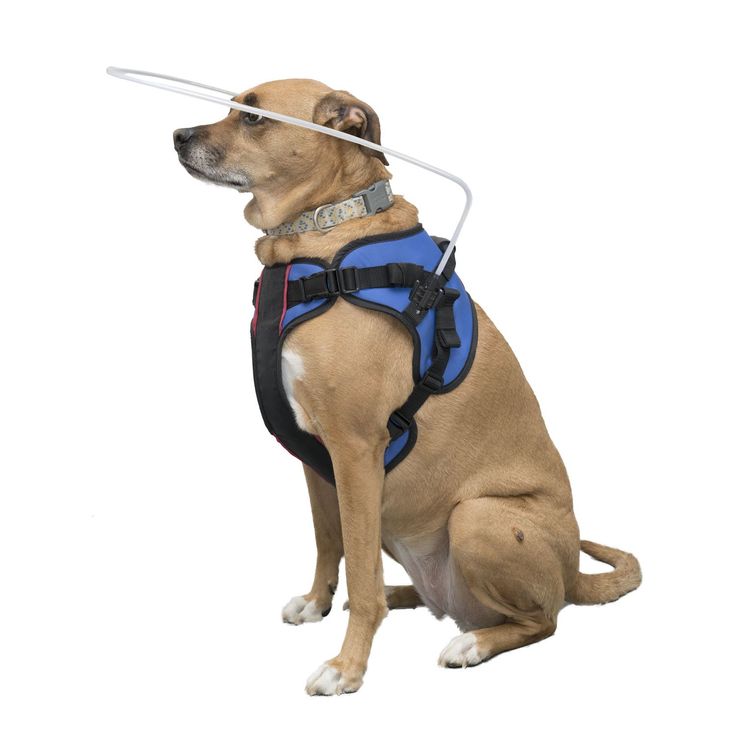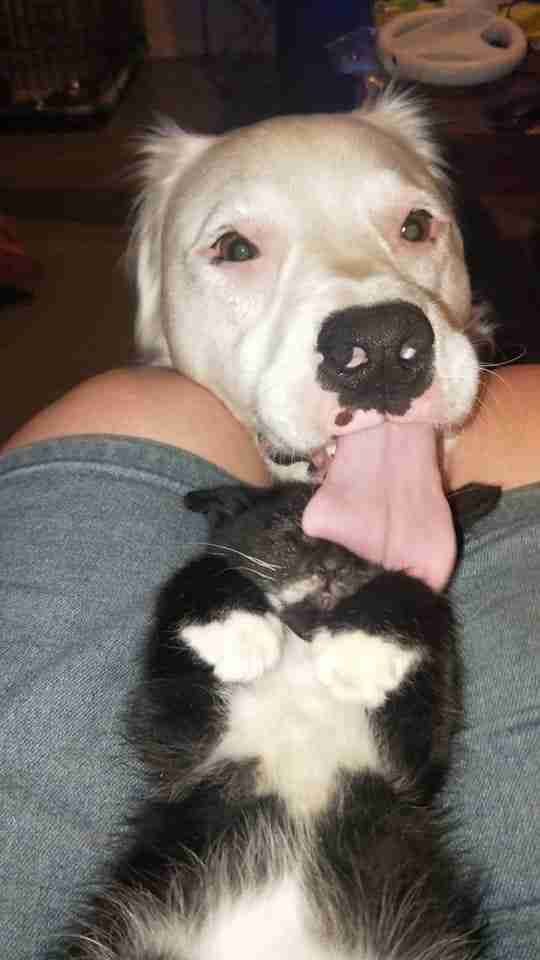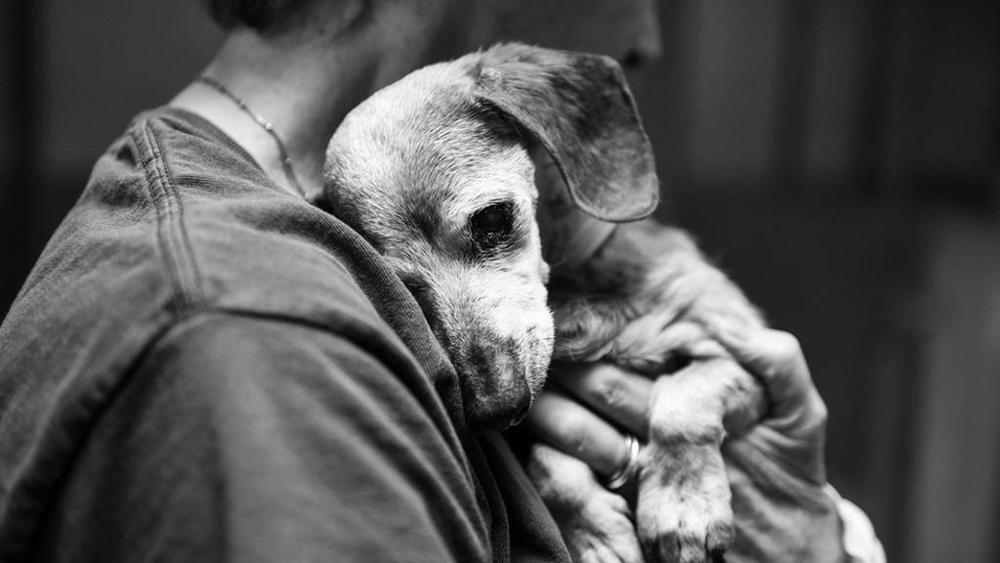Blind dog care: Caring for a blind pet
Caring for a blind pet
You can help a blind pet navigate his environment through his other senses. Levin recommends using scent markers, like a lightly applied vanilla essential oil by the door to the outside and lavender oil by pet beds. Wind chimes by exterior doors can help steer him toward thresholds, and a metronome near high-risk areas can warn him of sharp corners or places he can get stuck.
Tactile markers—like textured mats beneath food and water bowls and in front of litter boxes—are another type of navigation aid. Carpet runners can help guide a pet through the house, and throw rugs in front of furniture can help him remember the position of the couch and chairs. Mulch, sand and landscaping stones can enable your pet to confidently roam the backyard by alerting him to obstacles and safe pathways.
Stimulating your pet’s senses is also important for mental and physical health. “A lot of dogs who go blind later, they tend to just sit in one place. They don’t have motivation to move around,” says Debbie Bauer, author of Through a Dark Silence: Loving and Living With Your Blind and Deaf Dog (amazon. com). Sound-making toys, puzzle toys and scent-tracking games can keep your pet active and help fine-tune her sense of sound and smell. Walks around the neighborhood (keeping to the same path and using a short or rigid leash to guide your pet around obstacles) will allow her to check out new smells and gain confidence.
To stimulate Stevie’s senses, Bundock placed cat perches in front of screened-in windows where he can enjoy warm breezes and the smells and sounds of the outdoors. “When birds fly by, I can see his head following their movements like he’s able to see them,” she says.
Even the sound of your voice can be a form of comfort and enrichment for your pet. “The more I have talked with Stevie, the more responsive and interactive he has been with me,” says Bundock. “He knows my voice and faces me when I talk to him.”
Slowly introduce the unfamiliar
Blind pets can feel more vulnerable around strangers or in unfamiliar environments. One of Bundock’s biggest challenges with Stevie was getting him comfortable with new people.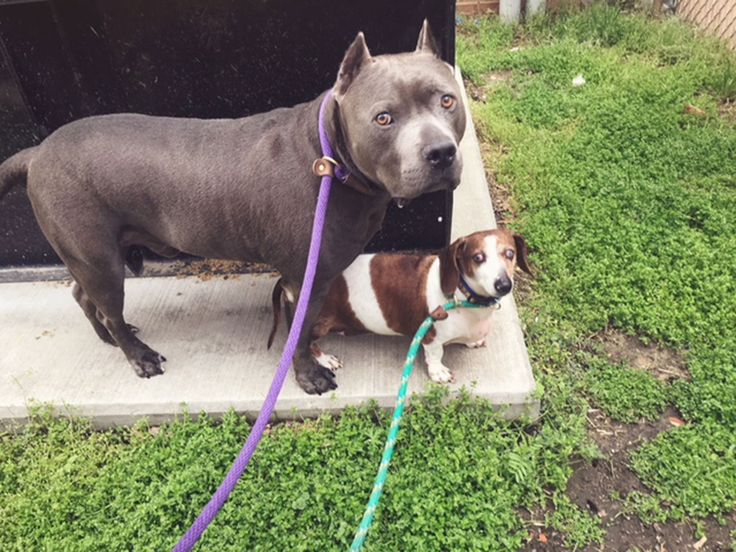
Introductions to other animals also should be done slowly. Here, too, you can use sound to help your blind pet compensate. Bundock’s dog and older cat always behaved appropriately with Stevie, but her younger cat, Darla, was “more intense,” she says. So she put a bell on her high-energy youngster, providing Stevie with an audible warning when Darla was nearby.
Because blind pets can be easily startled, you should talk to them before you touch them, says Bauer. If your pet’s hearing is also impaired, you can alert him to your approach by stepping a bit heavier or tugging his bed gently before you pet him. “It kind of shakes them awake a little bit,” says Bauer. “You can also put a little piece of food in front of their nose and let them wake up that way.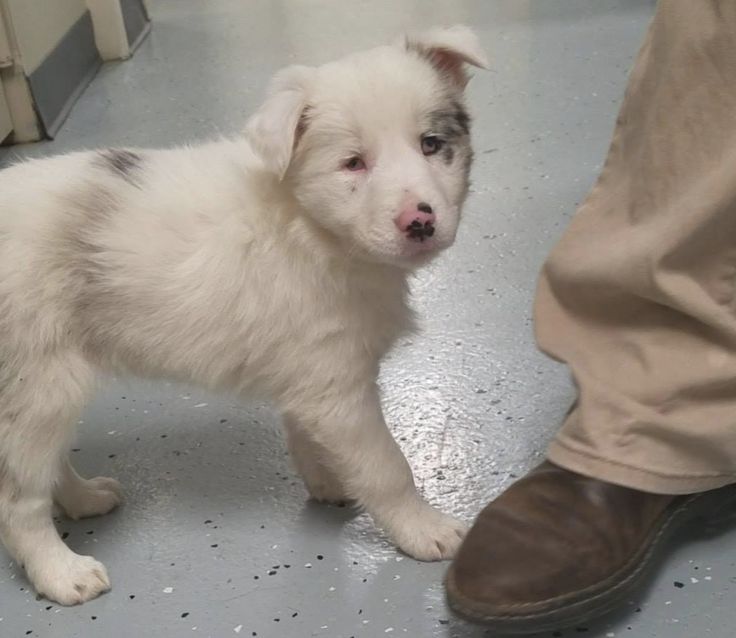
Help foster resilience
How easily pets adjust to blindness can depend on their age, personality and other factors, such as whether they were born blind or lost their vision suddenly. But with time and patience, a blind pet may surprise you.
When Bauer adopted a blind and deaf sheltie named Treasure, she assumed her new dog would be fearful and confused in her new home. Instead, “the first thing that struck me was that she didn’t really need me,” Bauer says. “… She took off and explored everything. It wasn’t what I expected.”
Bauer has since adopted or fostered several dogs with vision or hearing impairments or both. She’s had pups like Treasure who were born blind and ones who lost their vision as adults. The latter “need a little more stability in the location of things, to help them orient themselves,” she says.
Treasure, on the other hand, now works as a therapy dog and often travels with Bauer. “We stay in different hotel rooms. I go in first and make sure there is nothing dangerous for her to check out.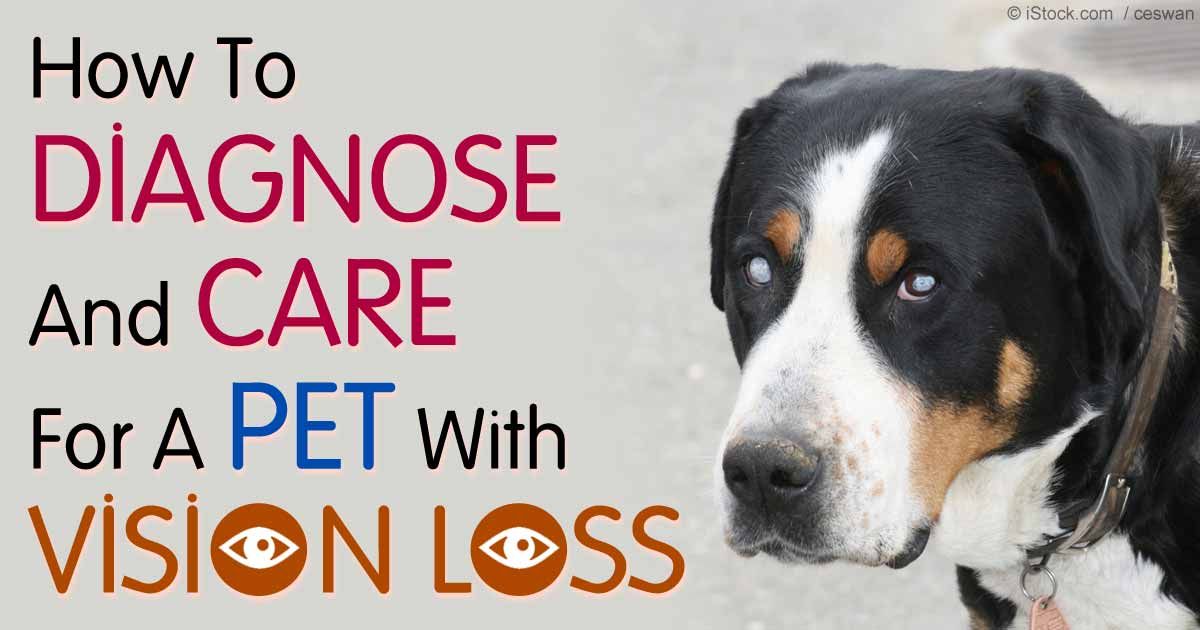
What to Expect When You Adopt a Blind Dog
While many people feel moved to help special needs animals, adopting a pet with health concerns can present some logistical concerns. Blind dogs, in particular, can be challenging to potential adopters, as many people have never had the pleasure of even knowing a low-vision pup.
But in general, caring for a blind dog isn’t all that much different than caring for a sighted dog. With just a few special considerations, you can make sure that your visually limited dog lives their best and happiest life.
Veterinary Concerns for Blind Dog Care
Additional veterinary bills are one of the chief concerns among those considering special needs pets, but Dr. Jeff Werber, an Emmy Award-winning veterinarian and author based in Los Angeles, says that this isn’t actually an issue for every case.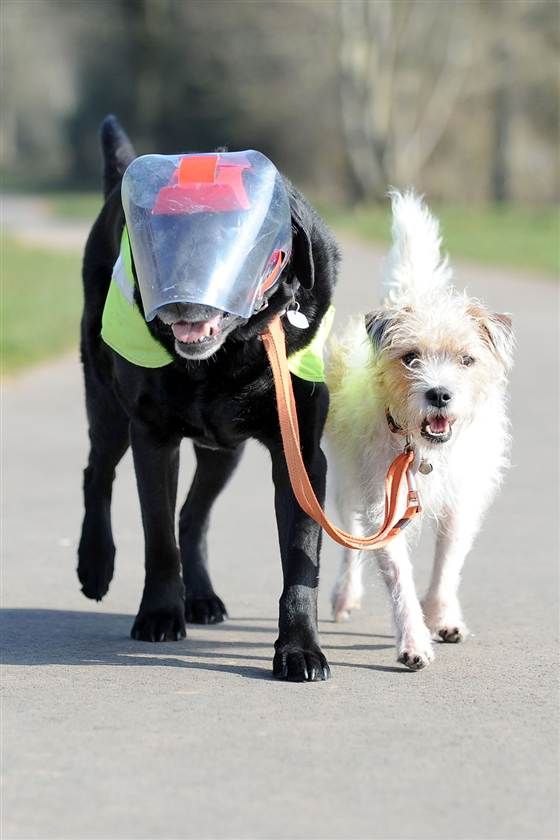
“There aren’t really any expenses related to the veterinary care of a blind dog, more than those of a seeing dog,” says Dr. Werber.
Dogs who are partially sighted due to disease are the exception. Adopters should take into consideration the cost of managing the underlying disease and, when possible, improving sight.
“If glaucoma is causing vision issues, there may be expenses related to continued medication or surgery,” says Dr. Werber. “It depends on the stage of blindness of the dog and at what point you are adopting the dog. If you adopt a dog who has early cataract disease, you may face related treatment expenses in the future.”
How to Help a Blind Dog With Easy Home Modifications
Blind dogs adjust surprisingly well to moving into a new environment, says Dr. Werber. “You’d be amazed at how rapidly blind dogs adapt to their living space and learn the number of steps from one room to another,” he says.
However, there are some things you can do to make your home easier for a blind dog to navigate, especially during the settling-in phase.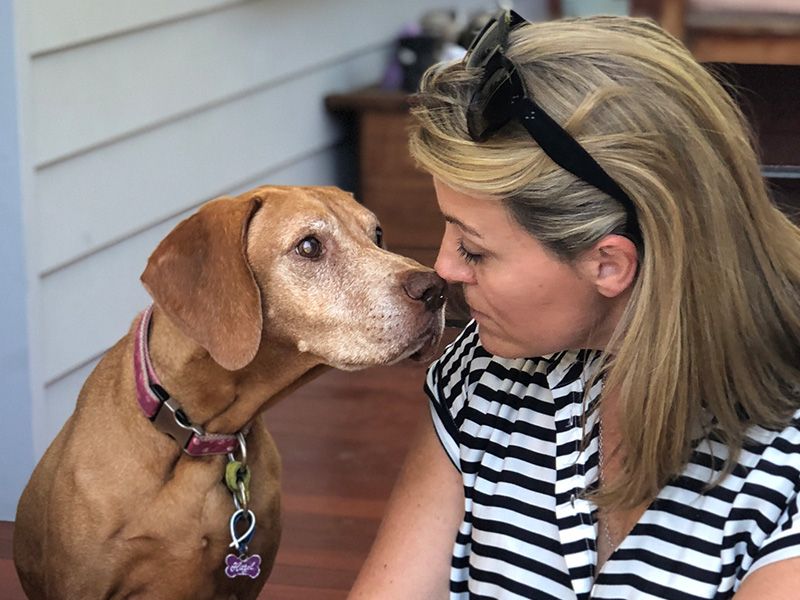
- When possible, opt for simple furniture layouts with clear pathways from room to room. “If your pup gets stuck in a corner or turned around somehow, is it easy to backtrack, change course or self-correct as needed? An easy floorplan can encourage confidence and exploration,” says Gore.
- Avoid rearranging furniture after bringing your blind dog home. “Dogs are very capable of learning an area, even if blind, but will be under duress if this changes too much or too often,” says Gore.
- “Pup-proofing is always a good idea,” says Gore. “For example, you may want to lock food cupboards, block off the stairs to the basement, cushion any sharp corners, or get a baby gate for a certain area of the house.”
- In the yard, it’s especially important to puppy-proof hazards, such as swimming pools with appropriate fences and locks, says Gore.
For added protection, a device such as the Whistle 3 pet GPS tracker and activity monitor can alert you if your dog wanders anywhere he shouldn’t.
As your pup familiarizes himself with his new turf, a blind dog halo and dog harness may be helpful, notes Gore.
- Muffin’s Halo For Blind Dogs angel wing bumper prevents dogs from hurting themselves on walls, furniture and other obstacles.
- The Halti dog harness is engineered to “steer” dogs from the chest and shoulders using a dog leash without putting painful pressure on the body.
Introducing a Blind Dog to Kids and Other Pets
When introducing blind dogs to other pets, you can largely rely on the animals’ sixth sense, says Dr. Werber.
“Our pets are usually smarter than we are and adapt to a blind dog really well and pretty quickly,” he notes. If any of your pets appear to become stressed when each other’s company, take a step back and proceed more gradually.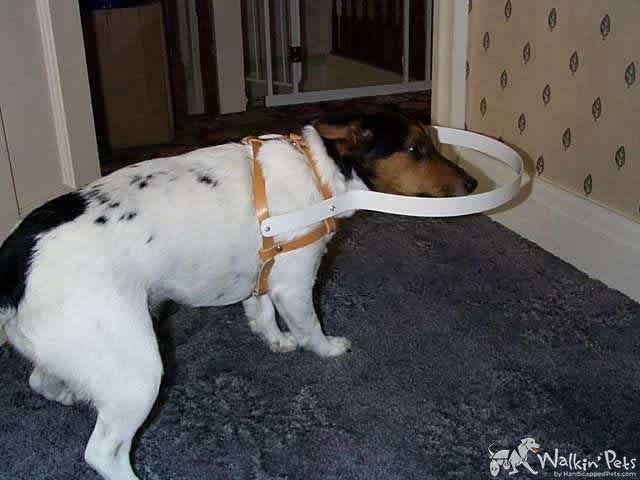
As for kids, it’s wise to take things slow. The quick movements and loud noises of children can be unnerving for any dog, but especially one who is unable to see, says Dr. Werber.
“Although a dog relies on his or her sense of smell far more than on sight, the loss of sight may call for some care in the introduction of a blind dog to kids,” he explains. “Give the dog a little time to identify and catalogue the smell and sound of the kids.”
Until the dog becomes familiar with the sounds each family member makes, children as well as adults should approach the dog slowly, says Dr. Werber. Before trying to pet your dog, call their name, and hold out your hand for sniffing.
Training a Blind Dog
Just like sighted dogs, blind dogs can benefit immensely from lifelong training.
“Mental stimulation and life enrichment are important for all individuals,” says Gore. “Training games and puzzle toys will enhance creativity and awareness, improve behavior and prevent future behavior issues.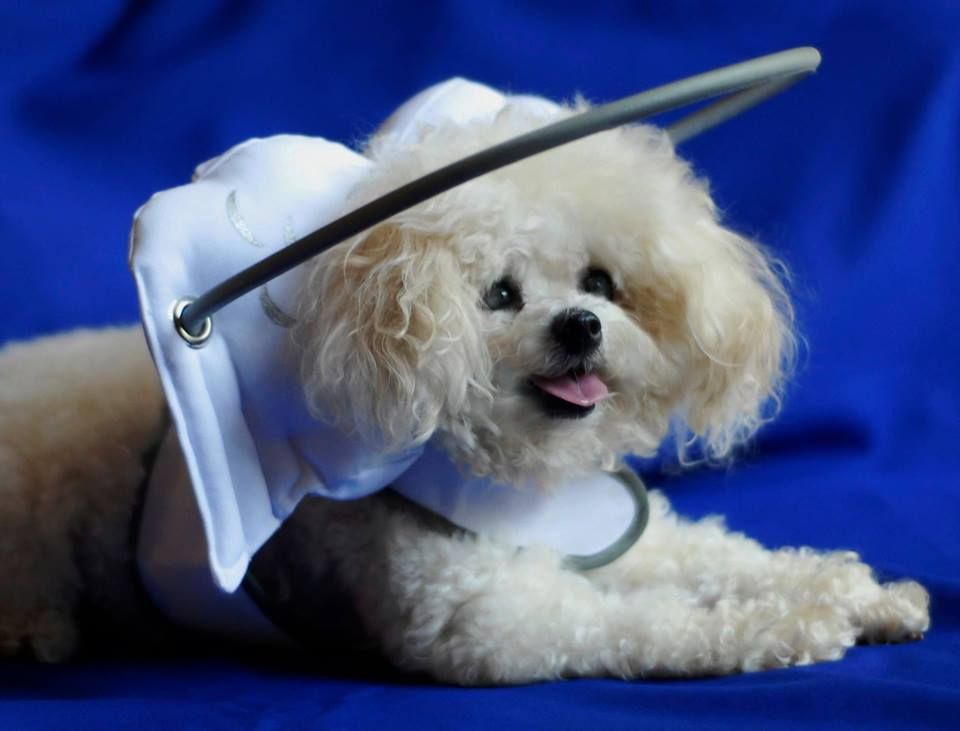
Blind dogs excel particularly well at clicker training, notes Gore. For this method, desirable behaviors are marked with a short, distinct clicking sound from a dog clicker as well as plenty of praise.
When training a blind dog, it’s essential to find a professional who practices positive reinforcement and either has experience training blind dogs or is prepared to handle any unique challenges.
“Work with a modern dog trainer who understands progressive, science-based methods and will conduct themselves with a higher ethical standard conducive to working with a special needs learner,” advises Gore.
Enrichment and Play for Blind Dogs
Blind dogs enjoy play and other enrichment activities just as much as their sighted counterparts.
“Blind dogs may be superstars in the areas of scenting and tracking, so that is a great sport to get into with your pup—it provides a wonderful outlet for bonding and life enrichment,” says Gore.
There are also plenty of dog toys for blind dogs. While traditional fetch may not be an option, squeaky dog ball toys can be exciting and engaging.
Try tossing them a distance from your pet, running after them yourself (bonus exercise for you!), and then squeaking them with your foot to let your dog know where they are.
Body awareness exercises, such as obstacle work, can also improve coordination and build confidence, notes Gore.
To help your pup relax after all that playtime, Gore personally recommends reiki for special needs dogs. “Holistic treatments like reiki can provide special soothing to ultra-sensitive individuals, like blind pups.”
“It can help the nervous system decompress and stay ahead of the everyday stress that comes with the challenges of existing in a sightless world,” says Gore.
Adopting a blind dog is one of the most rewarding experiences in pet parenthood. Although these special pets do require some additional considerations, they’re just as happy, fun and sweet as their sighted counterparts.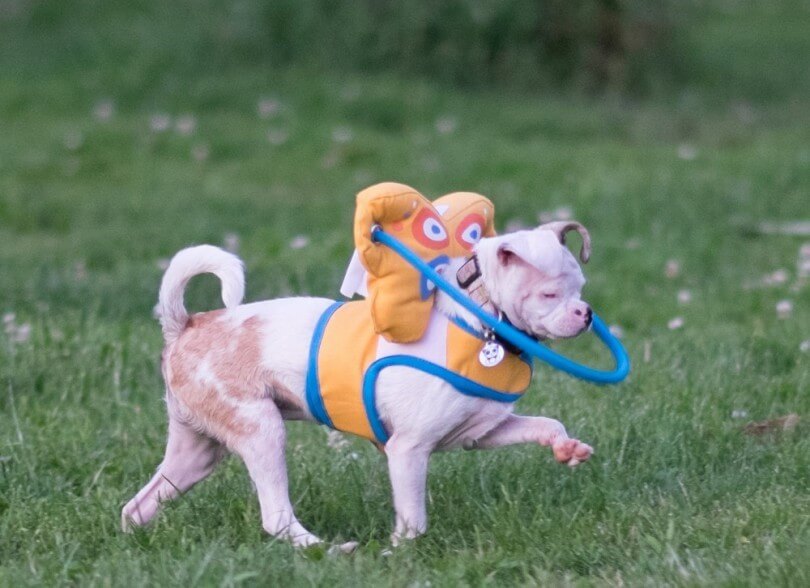
By: Monica Weymouth
Featured Image: iStock.com/Nicholas Chase
Blind dog. How to care and how to simplify life?
When a pet is diagnosed with blindness, it seems like a death sentence to every owner. In fact, living with a blind dog is not so easy, because every day you need to make efforts to ensure a full life for your pet, and this requires a lot of patience. The task of the owner is to teach the pet to live in a new way, to teach him to navigate in space. A pet that has lost its sight needs more care than usual.
After visiting a doctor, the owner should feel calm, do not panic. Often, the first thought that may appear after visiting a doctor is to get rid of a pet. But think not about yourself, but about your animal, how hard it is for him in such a situation. Blind people and dogs have better developed other senses. The pet will feel your negative attitude and become depressed because of this, which is undesirable in this state.
How to protect a dog that is blind
- From the day your dog lost his sight, safety must be maintained.
All family members should take care of the pet. Remove all dangerous items from the floor. Make sure the dog’s path is always clear. If she suddenly stumbles on some object, this can greatly affect her mental state. At first, you will need to show the dog the way from the bowl to the bed and the toilet, but then the dog will get used to it and everything will return to its normal course. Do not rearrange the furniture in the apartment so that the dog can navigate well. All items that she uses, let them remain in the same place where they always are.
- If you start noticing that your dog bumps into various objects, you can buy him a vest with a restrictive ring. Also, if you go on a visit or to nature, do not forget to wear this uniform so that the pet leads its usual lifestyle.
- A blind dog is always in danger. Forget about walking without a leash. Buy a tape measure or a long canvas leash so that the dog is always there and does not get lost. Such an animal should not be left alone on the street or in an unfamiliar environment for him, because the pet may be frightened and even die.
- Teach your dog simple but very important commands now: “Stop!”, “Caution!”, “Steps”, “Step back”. If you want to touch the dog, then warn it in advance so as not to frighten the animal.
- When you go outside, you can hang a bell or any object that makes sounds on your clothes so that your dog can hear you. At first, walk your dog only on familiar routes, where there are no threatening objects and holes.
You may also find our article on how to care for your dog’s eyes the right way
How to support a blind dog psychologically
- Talk to your dog more often, because the voice of your beloved owner will make you live and move on. Communicate with her everywhere: on the street, at home, at a party. If there are any obstacles on the way, warn your pet.
- Don’t let your pet be alone. Help your dog develop sound instincts by playing with squeakers, praise and treats. Remember that you should not allow your pet to withdraw into itself – it is very difficult psychologically and physically to overcome blindness.
- Blind dogs often experience character changes. Once kind and trusting pets with loss of vision can become insecure or aggressive, anxious – what if they forget about me, what if they don’t feed me? … You should support a dog that finds itself in a similar situation, do not get angry and do not scold it. Behave as usual, do not focus on negative behavior much attention.
- All this is temporary, if you support your blind dog, it will soon get used to this condition and consider it normal, then it will become much easier for you all.
Animals, like people, need support and attention, but this does not mean that your whole life should be turned upside down because your dog is blind! Of course, there are certain rules and tips that we described above, but basically, lead a normal life and your dog will soon get used to this situation and will live a normal dog life.
Frequently Asked Question: How to take care of a blind puppy?
If your dog has lost his sight, you may be wondering if it is cruel to keep him that way.
Veterinary ophthalmologists are often asked if a blind dog or cat can lead a happy life. The answer is unequivocal: “YES!” … A blind dog or cat will behave remarkably normal in their own home. It seems that animals that lose their sight gradually adapt better than those that lose their sight quickly.
In general, blind dogs can lead quite normal lives, but learning basic commands requires different methods than those normally used for sighted dogs. A dog born blind will have an easier time learning and adjusting, but a dog that is used to sight may take longer.
Your blind dog can easily spend time alone. He will quickly adjust to the loss of sight and find new ways to map his world. As with any big change, it will take time and patience for both of you to adjust properly.
As long as she feels comfortable, can move around, eat and drink, life is good.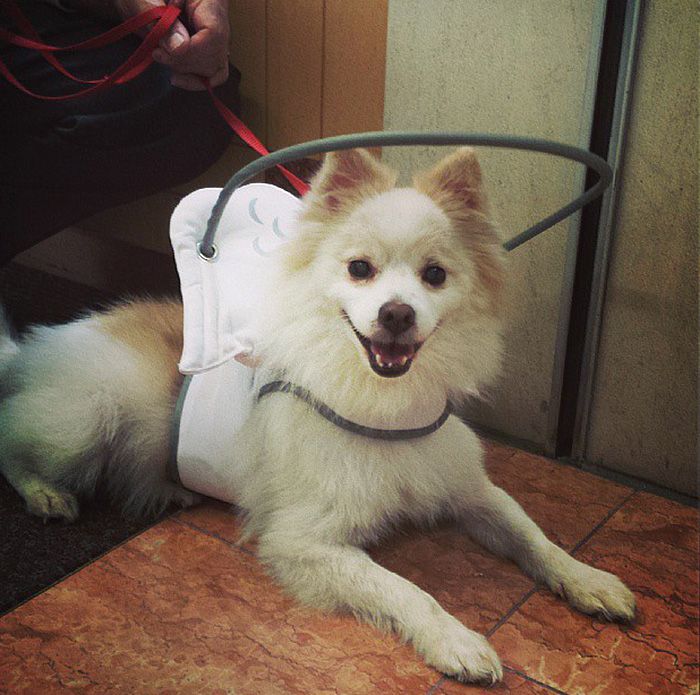
Here are 18 tips to help your blind friend navigate life at home and in nature.
Answer: As long as your dog has water and shelter, he can live outside. The main problem with keeping a dog outside all the time is behavior. Dogs are social animals and need human society.
The circling behavior of dogs can be associated with a number of diseases, including serious ones. If your dog walks in circles, contact your veterinarian immediately. In older dogs, circling is often associated with canine vestibular disease or cognitive dysfunction (also known as dementia or Alzheimer’s disease).
The Blind Dog Alliance recommends wearing bells so that your dog can know where you are besides the smell. Bluebells also go well with other animals in the house.
The signs that your dog is losing sight can be fairly obvious. He may bump into walls or furniture and have trouble finding food or toys. He may stop making eye contact with you. The signs may also be more subtle, such as reluctance to jump off or off the couch, a new level of anxiety, or attachment.
Summary: If two dogs are the indication, veterinary researchers may have found a cure for a previously incurable disease that causes dogs to suddenly go blind. In the past six weeks, a veterinary ophthalmologist has successfully treated two dogs for sudden acquired retinal degeneration syndrome.
Of course, a blind dog can do just fine if it has adapted to life without sight. Their owner plays a key role because it’s important to stick to the same walks (so the dog knows the route) and guide them with verbal cues when needed.
Rub a dog treat or a small drop of essential oil on a dog toy before throwing it to help the dog find it and choose an open, safe place to play.







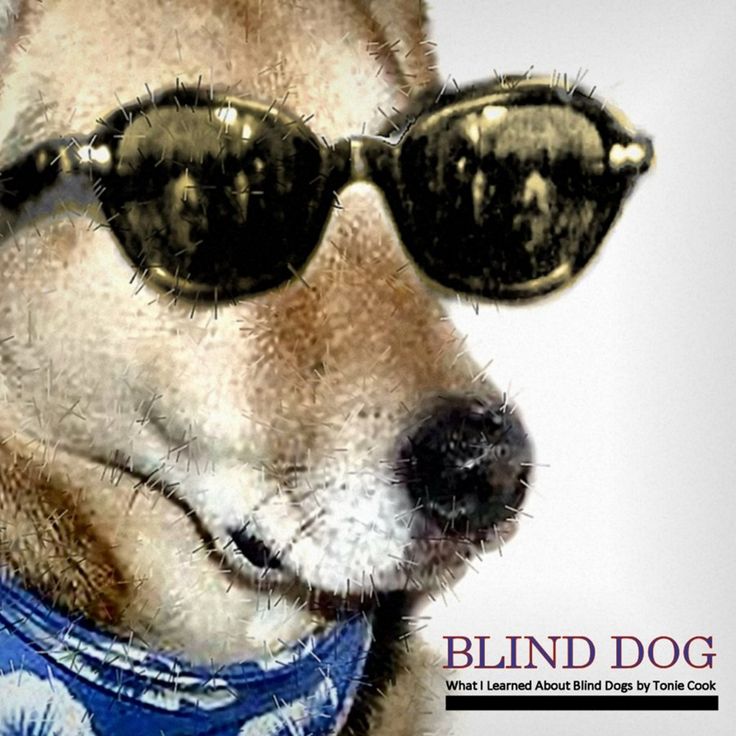 For added protection, a device such as the Whistle 3 pet GPS tracker and activity monitor can alert you if your dog wanders anywhere he shouldn’t.
For added protection, a device such as the Whistle 3 pet GPS tracker and activity monitor can alert you if your dog wanders anywhere he shouldn’t.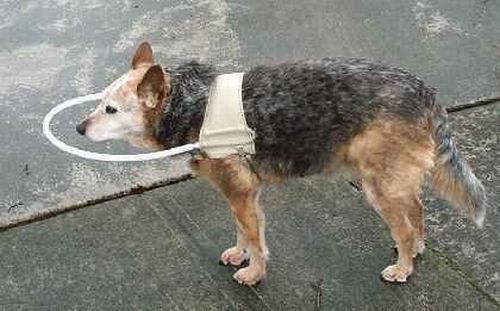 All family members should take care of the pet. Remove all dangerous items from the floor. Make sure the dog’s path is always clear. If she suddenly stumbles on some object, this can greatly affect her mental state. At first, you will need to show the dog the way from the bowl to the bed and the toilet, but then the dog will get used to it and everything will return to its normal course. Do not rearrange the furniture in the apartment so that the dog can navigate well. All items that she uses, let them remain in the same place where they always are.
All family members should take care of the pet. Remove all dangerous items from the floor. Make sure the dog’s path is always clear. If she suddenly stumbles on some object, this can greatly affect her mental state. At first, you will need to show the dog the way from the bowl to the bed and the toilet, but then the dog will get used to it and everything will return to its normal course. Do not rearrange the furniture in the apartment so that the dog can navigate well. All items that she uses, let them remain in the same place where they always are. 